Eight warriors can hardly represent the massive underground armies the crazed emperor assembled but they at least can provide a passing glimpse of that awesome and fearful spectacle. Asian Art Museum informed us:
Imperial leader. Fearsome tyrant. Military genius. Avid anti-intellectual. Obsessive star-gazer. Enduring mystery. The First Emperor, Qin Shihuang (259-210 BCE) was all these things and more. His storied legacy is rich with enduring achievements, including the unification of China under centralized imperial rule, brilliant military systems and advanced engineering and assembly production. He is also reputed to have burned scores of books, buried scholars alive and achieved widespread domination through devastating bloodshed.Bear in mind that the excavation sites and the half-buried warriors, horses, and chariots in Xi'an are only a portion of the vast mausoleum site, whose full extent has not been fully mapped out. In 2007, I had the chance to visit the excavation site and those on display were truly astonishing, in their sheer numbers and the refinement and individuality of those warriors and horses, obviously modeled after real living creatures. They were also painted yet almost completely fainted with only traces of pigments remained, just like those ancient Greek marbles, and more satisfyingly beautiful to me. Below are sample pictures I took during that trip:
First unearthed in 1974, the underground burial complex of the First Emperor is a revelation for the ages, an astonishing discovery on par with Egypt’s mummies and elaborate tombs. Contemporary observers continue to be enthralled by his legacy, and it is through this ongoing interest that the First Emperor did indeed achieve immortality. This exhibition includes ten figures—a representative sample of the actual army, which is estimated to include more than 7,000 life-sized figures and over 10,000 weapons.
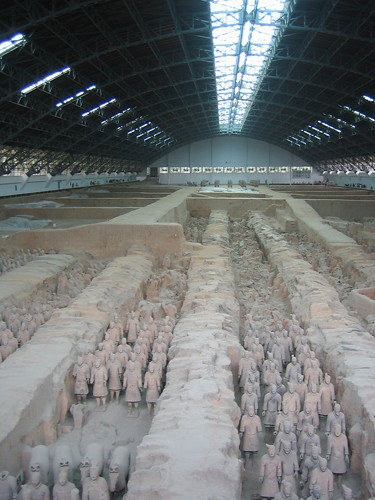
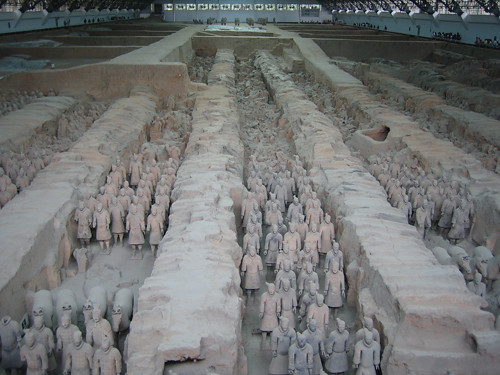


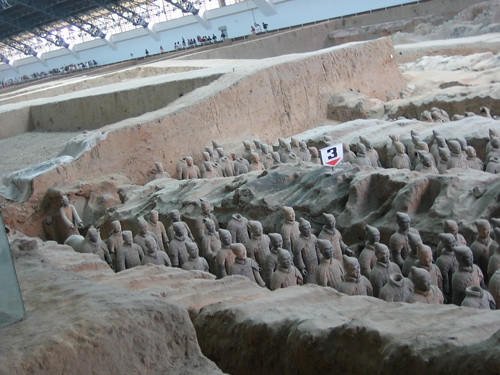
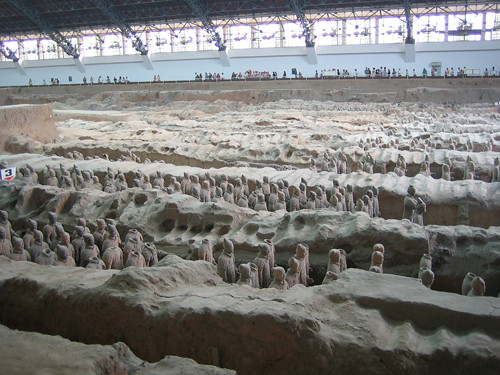
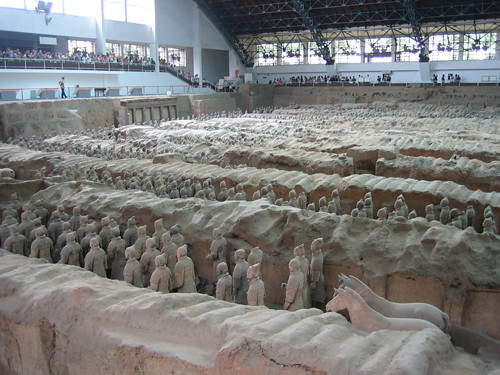
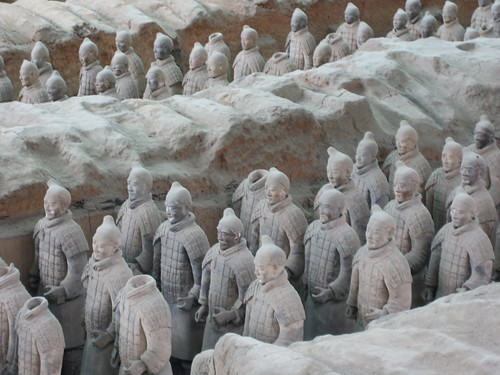
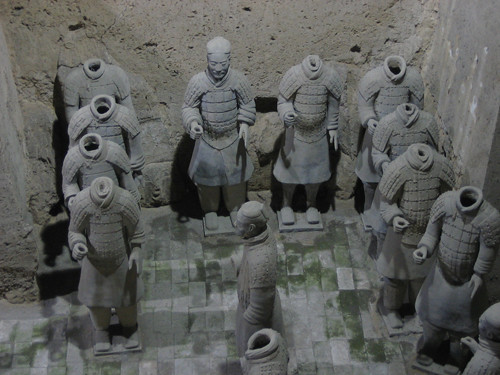
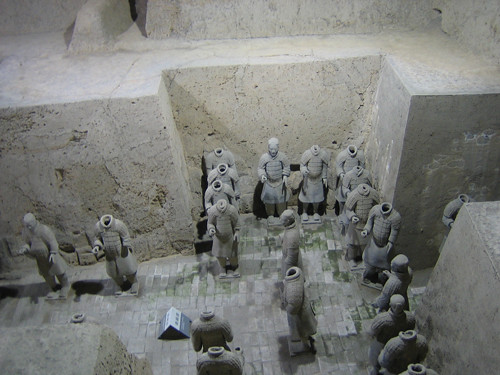
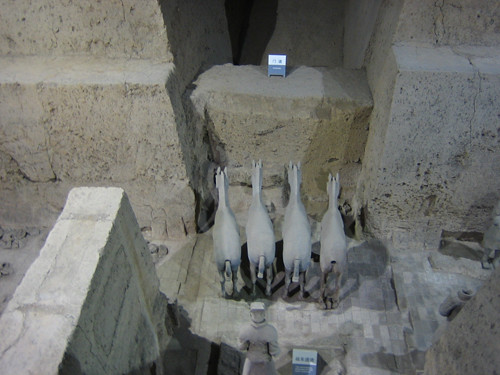
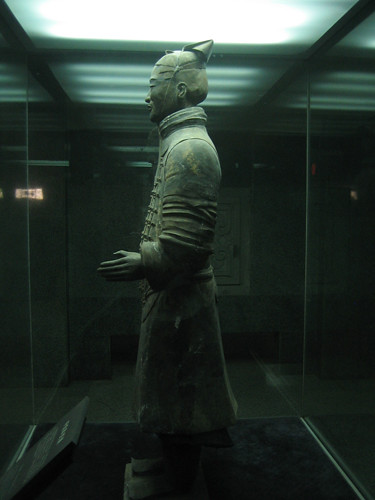
Despite that I have seen them in situ, I still plan to visit Asian Art Museum and for those who haven't seen them in Xi'an, I strongly encourage you to take the advantage of inspecting them up and close, more so than you could do in Xi'an.
The mausoleum in Xi'an was amazing yet it was topped a few days later in Xianyang, a smaller city nearby, in the same Shaanxi Province. There, I visited the mausoleum of an emperor from the next dynasty, Han, Emperor Jing of Han (188 BC – 141 BC).
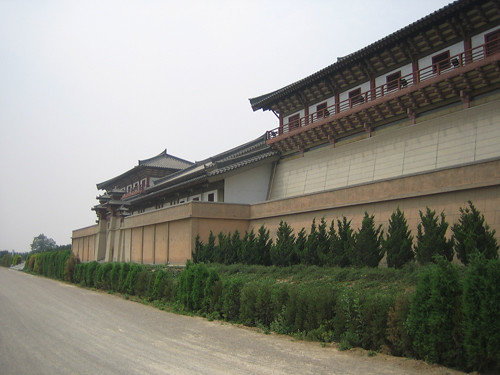
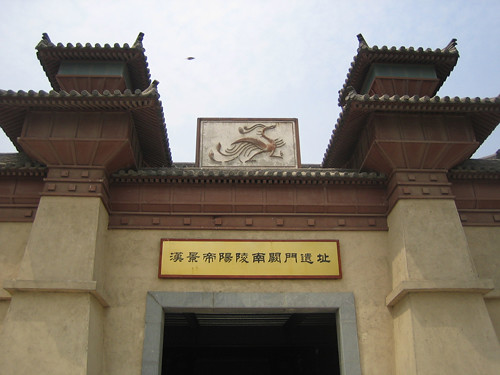
Either because Han Dynasty was less prosperous due to long drawn-out wars, or its emperors were less megalomaniac, none of its emperors' tombs or mausoleum match the scale of the "First Emperor's". Even the underground guards were not really warriors and war horses, but court personnel and domesticated animals, and in a much reduced scales, about 1/3 or 1/4 of the real size, as seen in Emperor Jing's mausoleum in Xianyang. Emperor Jing of Han was an important figure in Chinese history. Wikipedia described his thus:
Emperor Jing of Han (188 BC – 141 BC) was an emperor of China in the Han Dynasty from 156 BC to 141 BC. His reign saw the limit and curtailment of power of feudal princes which resulted in the Rebellion of the Seven States in 154 BC. Emperor Jing managed to crush the revolt and princes were thereafter denied rights to appoint ministers for their fief. This move consolidated central power which paved the way for the glorious and long reign of his son Emperor Wu of Han.Once again, the excavated site was only a small portion of the whole burial ground. Even so, it was impressively huge, with numerous small doll figurines half-buried. Visitors were allowed to walk along transparent walkways and inspect those artifacts, as undisturbed as possible.
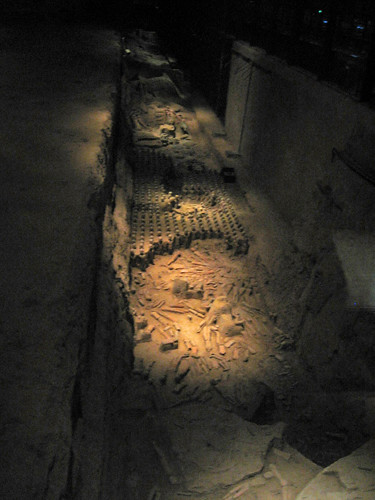
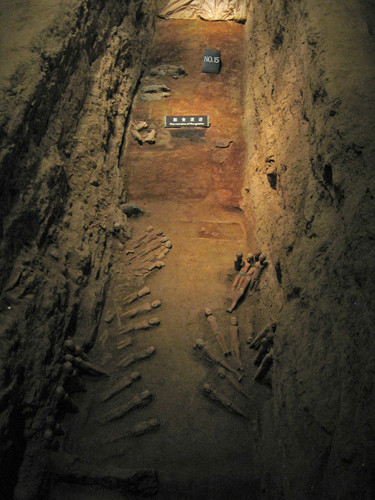
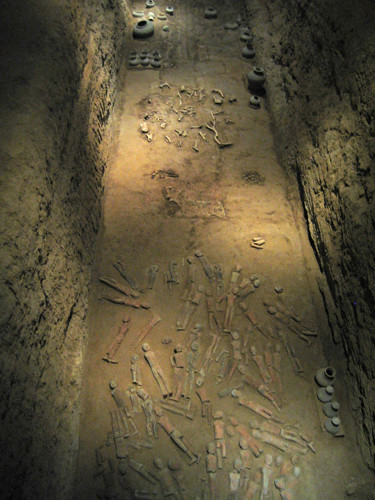
We were also able to see some of those figurines and animals in display cases with better lighting. Those doll figurines had earthenware torsos and their wooden arms had rotten away, made them rather creepy, and I praised them over the full-sized terracotta warriors for the exoticism emitted from these mutilated figurines below:
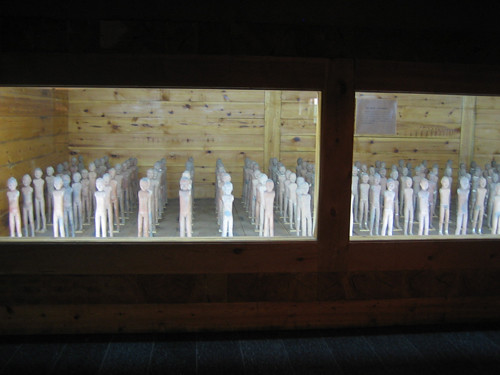
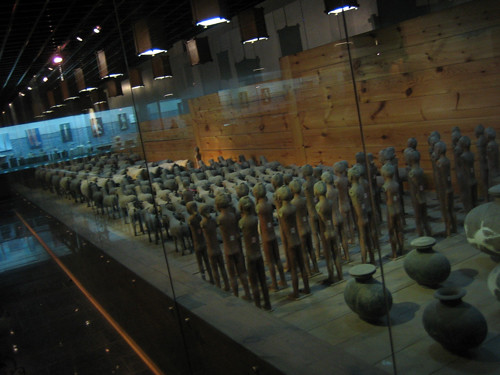
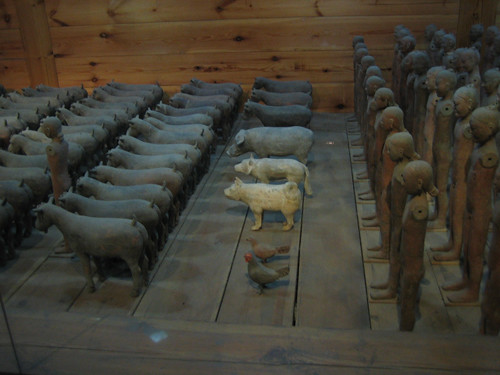
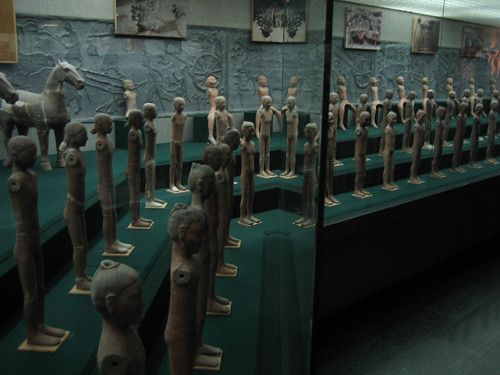
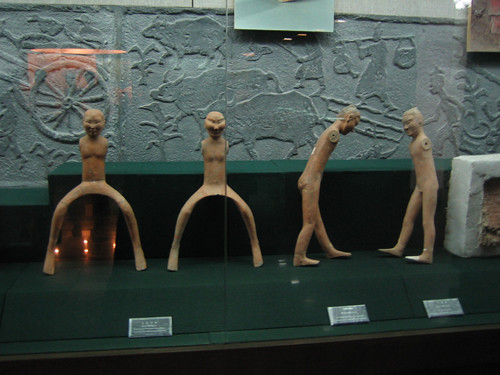
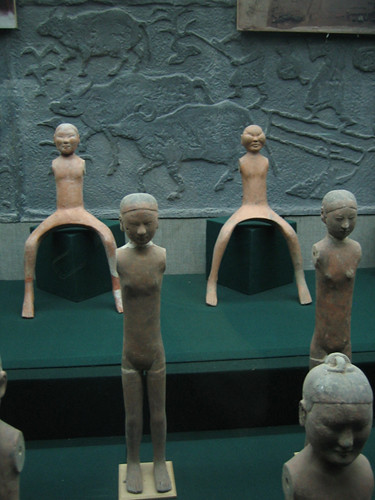
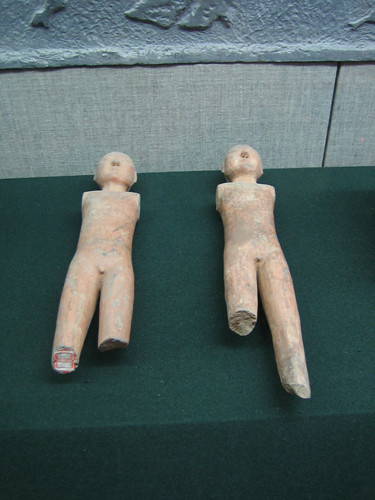
Related posts on Art · 文化 · Kunst:
- Last Chance to See Terracotta Warriors in San Francisco Asian Art Museum
- Weep for Ancient City Walls of Xi'an
- Ruins in Sanxingdui (Three-Star Mound) and Jinsha (Gold Sands), Sichuan, China





woowwww this is amazing,,, i like it,,,
ReplyDeleteThank you. They are quite stunning. Most people know of Xi'an's Site, but the one in Xianyang, only 1 hr train ride away, is quite fun and impressive as well.
Delete